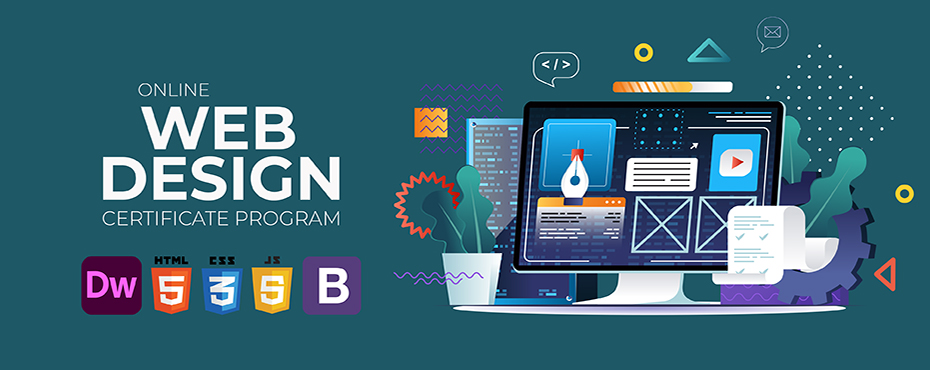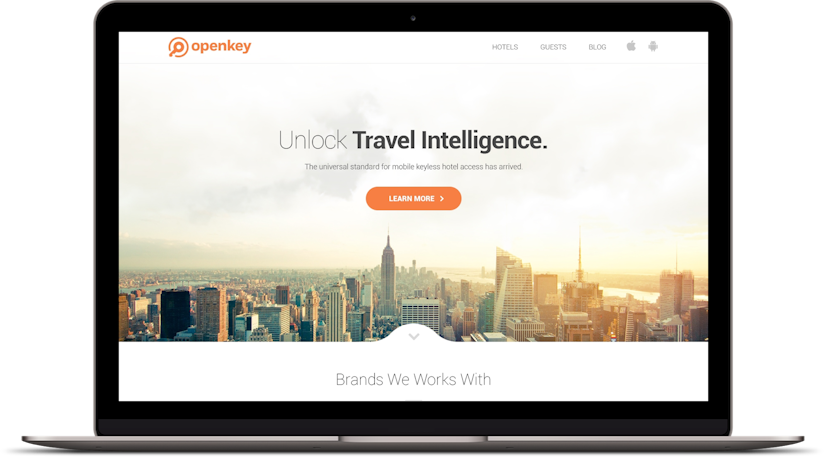All Categories
Featured
Table of Contents
- – Modern Website Designs - Best Web Page Designe...
- – Law Firm Website Design, Attorney Web Design,...
- – Web Design Blog - Webdesigner Depot Webdesign...
- – Web Development Bachelor's Degree - Full Sail...
- – Learn Web Design With Online Courses, Classes...
- – Powderkeg: Web Design Madison, Wi Tips and Tr...
- – Sustainable Web Design: Home Tips and Tricks:
- – What Is Web Design? The Ultimate Guide To We...
- – What Is Web Design? A Comprehensive Guide - ...
- – What Is A Web Designer? (2022 Guide) - Brain...
- – Web Design - Entrepreneur Tips and Tricks:
Modern Website Designs - Best Web Page Designers Tips and Tricks:
Quick summary Functionality and the energy, not the visual design, determine the success or failure of a site. Considering that the visitor of the page is the only individual who clicks the mouse and for that reason decides whatever, user-centric design has developed as a basic approach for effective and profit-oriented website design - web design frederick md.
and the energy, not the visual style, identify the success or failure of a website. Since the visitor of the page is the only individual who clicks the mouse and for that reason decides whatever, user-centric design has actually ended up being a standard method for successful and profit-oriented website design. After all, if users can't utilize a function, it might as well not exist.
g. where the search box need to be placed) as it has actually already been carried out in a variety of posts; instead we concentrate on the approaches which, used properly, can lead to more sophisticated design choices and streamline the procedure of viewing presented info. Please discover that you may be thinking about the usability-related short articles we have actually published before: Concepts Of Good Site Design And Efficient Website Design Guidelines, In order to use the principles effectively we first need to understand how users engage with websites, how they think and what are the standard patterns of users' behavior.
Law Firm Website Design, Attorney Web Design, Lawyer ... Tips and Tricks:
Visitors look at each new page, scan some of the text, and click the first link that captures their interest or vaguely looks like the thing they're trying to find. There are big parts of the page they don't even look at. A lot of users browse for something intriguing (or useful) and clickable; as quickly as some appealing prospects are found, users click.
If a page offers users with top quality material, they want to compromise the material with ads and the design of the website. This is the reason that not-that-well-designed sites with premium material gain a lot of traffic over years. Content is more crucial than the design which supports it.

Really easy principle: If a website isn't able to meet users' expectations, then designer failed to get his task done correctly and the business loses cash. The greater is the cognitive load and the less user-friendly is the navigation, the more prepared are users to leave the site and search for options.
Web Design Blog - Webdesigner Depot Webdesigner Depot Tips and Tricks:
Neither do they scan webpage in a linear fashion, going sequentially from one site area to another one. Instead users satisfice; they select the first affordable alternative. As quickly as they discover a link that appears like it may result in the goal, there is a great opportunity that it will be right away clicked.
It does not matter to us if we comprehend how things work, as long as we can utilize them. If your audience is going to imitate you're designing signboard, then design fantastic signboards." Users wish to be able to manage their browser and depend on the consistent information discussion throughout the site.
If the navigation and website architecture aren't intuitive, the number of enigma grows and makes it harder for users to understand how the system works and how to obtain from point A to point B. A clear structure, moderate visual clues and quickly recognizable links can help users to find their path to their objective.
Web Development Bachelor's Degree - Full Sail University Tips and Tricks:

claims to be "beyond channels, beyond items, beyond circulation". What does it indicate? Because users tend to check out websites according to the "F"-pattern, these 3 declarations would be the first aspects users will see on the page once it is packed. The style itself is easy and instinctive, to understand what the page is about the user needs to search for the response.
Once you've achieved this, you can communicate why the system is beneficial and how users can benefit from it. Don't Squander Users' Perseverance, In every project when you are going to offer your visitors some service or tool, attempt to keep your user requirements very little.
Novice visitors are willing to, not filling long web forms for an account they may never use in the future. Let users check out the site and discover your services without forcing them into sharing personal information. It's not sensible to force users to enter an e-mail address to check the function.
Learn Web Design With Online Courses, Classes, & Lessons Tips and Tricks:
Stikkit is an ideal example for an easy to use service which requires practically nothing from the visitor which is inconspicuous and comforting. And that's what you desire your users to feel on your web site. Apparently, Termite needs more. However the registration can be done in less than 30 seconds as the type has horizontal orientation, the user doesn't even need to scroll the page.
A user registration alone is adequate of an obstacle to user navigation to reduce incoming traffic. 3. Manage To Focus Users' Attention, As websites offer both fixed and vibrant material, some elements of the interface bring in attention more than others do. Undoubtedly, images are more appealing than the text just as the sentences marked as vibrant are more attractive than plain text.
Focusing users' attention to particular locations of the site with a moderate use of visual elements can help your visitors to get from point A to point B without thinking of how it really is supposed to be done. The less enigma visitors have, the they have and the more trust they can establish towards the company the site represents.
Powderkeg: Web Design Madison, Wi Tips and Tricks:
Aim For Function Exposure, Modern web styles are normally criticized due to their method of assisting users with aesthetically appealing 1-2-3-done-steps, large buttons with visual effects etc. From the design perspective these components really aren't a bad thing.
The website has 9 main navigation options which are visible at the very first glimpse. What matters is that the content is well-understood and visitors feel comfortable with the way they engage with the system.
Instead a rate: just what visitors are looking for. An optimal solution for efficient writing is touse brief and concise phrases (come to the point as rapidly as possible), use scannable design (categorize the material, use several heading levels, utilize visual elements and bulleted lists which break the circulation of consistent text blocks), use plain and unbiased language (a promo does not require to sound like advertisement; offer your users some reasonable and unbiased factor why they must use your service or remain on your website)6.
Sustainable Web Design: Home Tips and Tricks:
Users are rarely on a site to enjoy the design; furthermore, for the most part they are trying to find the info regardless of the design - web design frederick md. Make every effort for simpleness instead of complexity. From the visitors' perspective, the best website style is a pure text, without any ads or further content blocks matching exactly the question visitors used or the material they have actually been trying to find.
Finch plainly presents the details about the website and gives visitors an option of options without overcrowding them with unnecessary content. Not only does it help to for the visitors, however it makes it possible to perceive the information provided on the screen.
Complex structures are harder to check out, scan, examine and deal with. If you have the option in between separating 2 design segments by a noticeable line or by some whitespace, it's typically better to utilize the whitespace option. (Simon's Law): the better you handle to offer users with a sense of visual hierarchy, the simpler your content will be to view.
What Is Web Design? The Ultimate Guide To Website Design ... Tips and Tricks:
The exact same conventions and rules need to be applied to all elements.: do the most with the least quantity of hints and visual components. Four significant indicate be thought about: simpleness, clearness, diversity, and focus. Simpleness consists of just the elements that are essential for interaction. Clearness: all components need to be developed so their meaning is not uncertain.
Conventions Are Our Friends, Traditional style of site elements does not result in a dull website. As they decrease the discovering curve, the requirement to figure out how things work. For instance, it would be a functionality nightmare if all websites had different visual discussion of RSS-feeds. That's not that various from our regular life where we tend to get used to fundamental concepts of how we arrange data (folders) or do shopping (placement of products).
understand what they're anticipating from a site navigation, text structure, search positioning etc. A typical example from functionality sessions is to translate the page in Japanese (presuming your web users don't know Japanese, e. g. with Babelfish) and offer your usability testers with a job to discover something in the page of various language.
What Is Web Design? A Comprehensive Guide - Wix.com Tips and Tricks:
Steve Krug recommends that it's much better to, however make the most of conventions when you don't. 10. Test Early, Test Frequently, This so-called TETO-principle needs to be used to every web design job as use tests frequently provide into significant issues and issues connected to a provided design. Test not too late, not too little and not for the wrong factors.
Some crucial points to bear in mind: according to Steve Krug, and screening one user early in the project is much better than testing 50 near completion. Accoring to Boehm's first law, errors are most frequent throughout requirements and design activities and are the more costly the later on they are eliminated.
That suggests that you create something, test it, repair it and then check it again. There might be problems which haven't been discovered during the first round as users were virtually blocked by other problems.
What Is A Web Designer? (2022 Guide) - Brainstation® Tips and Tricks:

This holds for designers. After you've dealt with a site for few weeks, you can't observe it from a fresh viewpoint anymore. You know how it is developed and for that reason you understand exactly how it works you have the wisdom independent testers and visitors of your site would not have.
It can be linked to other areas such as graphic style, user experience, and multimedia arts, but is more appropriately seen from a technological viewpoint. It has ended up being a large part of individuals's daily lives. It is tough to picture the Web without animated graphics, different designs of typography, background, videos and music.

Throughout 1991 to 1993 the Internet was born. Text-only pages might be viewed utilizing an easy line-mode browser. In 1993 Marc Andreessen and Eric Bina, developed the Mosaic browser. At the time there were multiple browsers, nevertheless most of them were Unix-based and naturally text heavy. There had actually been no integrated approach to graphic style components such as images or sounds.
Web Design - Entrepreneur Tips and Tricks:
The W3C was produced in October 1994 to "lead the Web to its full capacity by establishing typical protocols that promote its advancement and guarantee its interoperability." This dissuaded any one business from monopolizing a propriety web browser and programs language, which might have changed the result of the World Wide Web as a whole.
As this has actually happened the innovation of the web has likewise carried on. There have likewise been significant modifications in the way people utilize and access the web, and this has altered how sites are designed. Considering that the end of the browsers wars [] new browsers have been launched. Many of these are open source meaning that they tend to have faster development and are more encouraging of new standards.
Learn more about Lovell Media Group LLC or TrainACETable of Contents
- – Modern Website Designs - Best Web Page Designe...
- – Law Firm Website Design, Attorney Web Design,...
- – Web Design Blog - Webdesigner Depot Webdesign...
- – Web Development Bachelor's Degree - Full Sail...
- – Learn Web Design With Online Courses, Classes...
- – Powderkeg: Web Design Madison, Wi Tips and Tr...
- – Sustainable Web Design: Home Tips and Tricks:
- – What Is Web Design? The Ultimate Guide To We...
- – What Is Web Design? A Comprehensive Guide - ...
- – What Is A Web Designer? (2022 Guide) - Brain...
- – Web Design - Entrepreneur Tips and Tricks:
Latest Posts
What Is Web Design? The Ultimate Guide To Website Design ... Tips and Tricks:
53 Web Design Tools To Help You Work Smarter In 2022 Tips and Tricks:
Indianapolis Web Design And Digital Marketing Agency Tips and Tricks:
More
Latest Posts
What Is Web Design? The Ultimate Guide To Website Design ... Tips and Tricks:
53 Web Design Tools To Help You Work Smarter In 2022 Tips and Tricks:
Indianapolis Web Design And Digital Marketing Agency Tips and Tricks: